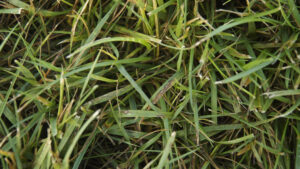Summer Stress
by Josh Thomason
As the scorching sun casts its relentless gaze upon the pristine playing surfaces of the amenity industry, golf course managers and groundsmen find themselves amid a ceaseless battle against nature during the summer. With sweltering temperatures increasing the onset of abiotic stress of the turfgrass sward and soil profile, turf managers face a real test of their resilience and ingenuity, from combating drought and disease pressures to growing in new pitches and maintaining impeccable playing surfaces.
Amidst the relentless pursuit of perfection, golf course managers and groundspeople, stand as turf guardians, facing the daunting trails of the summer with unwavering determination and commitment to their craft. Through carefully planned agronomic practices, these stresses can be mitigated and alleviated.
Sportsturf Management
Firstly, let’s talk about the sportsturf environment, and, more importantly, Gray Leaf Spot (GLS). It is slowly becoming the number one problem for the groundsman, especially in the South of the UK. We believe at AGS, that preventative testing and getting ahead of the disease, detecting it in the early stages within the rootzone before its onset, will allow the groundsman to start making a proactive and preventive approach. Reach out to your AGS technical representative to arrange for samples to be sent to an independent laboratory.
Once GLS has been identified, Smiley, (2007) Author of the Compendium of Turfgrass Diseases, states that it’s about maintaining the correct balance of nitrogen and water and managing leaf wetness. Using the correct nitrogen source to reduce the soft growth of the grass plant is critical. Sufficient levels of slow-release nitrogen, such as, Nitro-22 will reduce the growth rate to a more consistent and manageable threshold. In addition, moving your watering cycle from little and often, too deep, and infrequent will allow the water to move deeper through the soil profile and away from the top of the profile where disease will harbour. This will also encourage deeper rooting and a drier playing surface. However, moisture management is essential using sensors or moisture meters will give you a better understanding of when the turfgrass plant needs water application. In terms of managing leaf wetness, fans can be introduced specifically in the football stadium environment to dry the playing surface.
Hsiang, (2011) research on plant defence indicators, shows that salicylic acid induces Systemic Acquired Resistance (SAR) in plants. SAR Activator will assist in elevated salicylic acid levels in plant leaves, producing a greater ability to withstand attacks from fungal pathogens, reducing infection and relieving stress. Lugtenberg’s (2009) Study clarifies that PGPR strengthens plant disease resistance by integrating beneficial biology and Plant Growth Promoting Rhizobacteria (PGPR) with Companion, used in a drench spray. Finally, consider overseeding with Barenbrug ryegrass cultivars with higher GLS disease tolerance.
Golf Course Management
In golf course management, robust agronomic planning can diminish stress on the rootzones and the turfgrass sward. Anthracnose prevention must start earlier and continue with a year-round balanced nutritional programme. Fidanza (2023) elaborates that ‘anthracnose severity is compellingly linked with nitrogen and potassium deficiencies in Poa Annua and soil pH’. Supporting this, Chen, Y. (2016) research has shown that an early season base feed will maximise soil and optimise plant health and aid anthracnose suppression. Use of Sustane 4.6.4 will be beneficial as an early season feed then before the expected stress period, apply Sustane 5.2.4 to promote low-yield & healthy growth. A spoon-feeding programme using Classic 18.0.6, Pot Carb 0.0.25, Quick Response 20.3.3 during the stress period utilises the low salt index of these products and avoids excess growth through using slow-release nutrition, promoting low clipping yield that gives a consistent playing surface in terms of performance measurements.
In conjunction with a well-balanced wetting agent programme, utilising biostimulants such as Essential Plus or Solunar seaweed as a drench to optimise soil health can be achieved and maintained during periods of high abiotic stress, safeguarding the rhizosphere and, subsequently, the turfgrass plants’ health. In independent research, TKO Phosphite has shown to be effective at strengthening the plant’s immune system and suppressing plant pathogens.
Hempfling et al., (2015) research shows that sand topdressing does not increase the severity of anthracnose. Still, light, frequent applications through the summer months on a Poa annua sward saw a reduction in the severity, along with simple practices of raising the height of cut.
Additionally, during this stress period, a foliar application during high PAR (photosynthetically active radiation) periods of a pigment Envy combined with the biostimulant Super Fifty Prime. Research has shown that pigments protect turf from harmful UV rays and maximising PAR (Nangle, E.J. et al. 2015) whilst, biostimulants will eliminate oxidative stress within the sward. Finally, after the disease has broken out, take this opportunity to overseed disease scarring with Barenbrug All Bent, a browntop bentgrass mixture to increase genetic diversity and disease tolerance with the turfgrass sward.
Joshua Thomason (BSc) Hons | Key Account & Technical Manager
t. 07956766882 | www.advancegrass.com
References
Chen, Y. (2016) Influence of seasonal N fertilization, plant growth regulators, and fungicide application timing on anthracnose severity of annual bluegrass putting greens, Master’s thesis 996. University of Connecticut [Preprint]. Available at: at:http://digitalcommons.uconn.edu/gs_theses/996) (Accessed: 24 June 2023).
Fidanza, M. (2023) in Achieving Sustainable Turfgrass Management. Cambridge: Burleigh Dodds Science Publishing, pp. 170–172.
Hempfling, J.W., Clarke, B.B. and Murphy, J.A. (2015) ‘Anthracnose disease on annual bluegrass as influenced by spring and summer topdressing’, Crop Science, 55(1), pp. 437–443. doi:10.2135/cropsci2014.04.0297.
Hsiang, T., Goodwin, P.H. and Cortes-Barco, A.M. (2011) ‘Plant defense activators and control of turfgrass diseases’, Outlooks on Pest Management, 22(4), pp. 160–164. doi:10.1564/22aug04.
Lugtenberg, B. and Kamilova, F. (2009) ‘Plant-growth-promoting rhizobacteria’, Annual Review of Microbiology, 63(1), pp. 541–556. doi:10.1146/annurev.micro.62.081307.162918.
Nangle, E.J. et al. (2015) ‘Pigment changes in cool‐season turfgrasses in response to ultraviolet‐b light irradiance’, Agronomy Journal, 107(1), pp. 41–50. doi:10.2134/agronj14.0249.
Smiley, R.W., Dernoeden, P.H. and Clarke, B.B. (2007) ‘Infectious Diseases Caused by Fungi’, in Compendium of turfgrass diseases. St. Paul, MN: APS Press, pp. 24–28.





